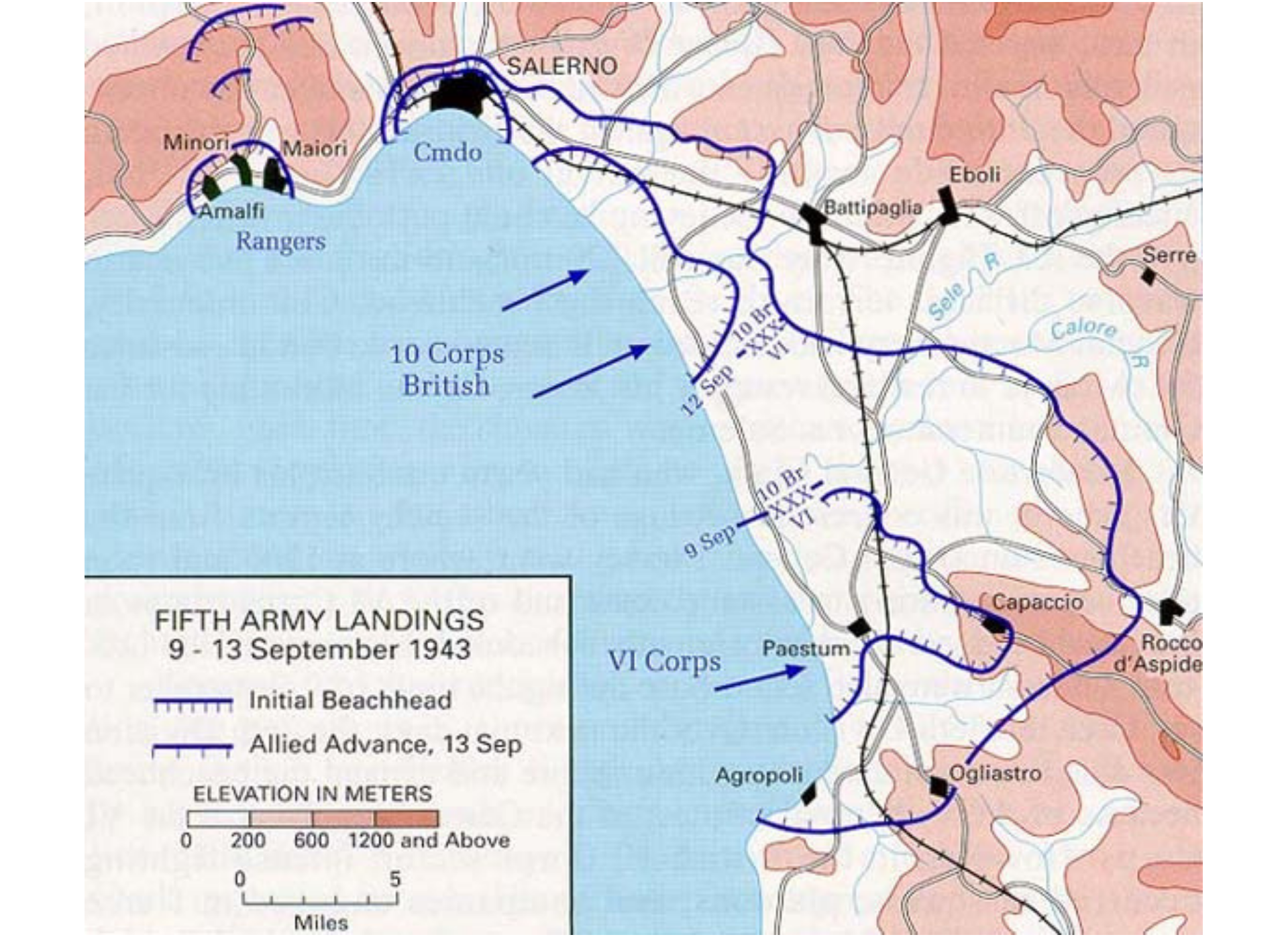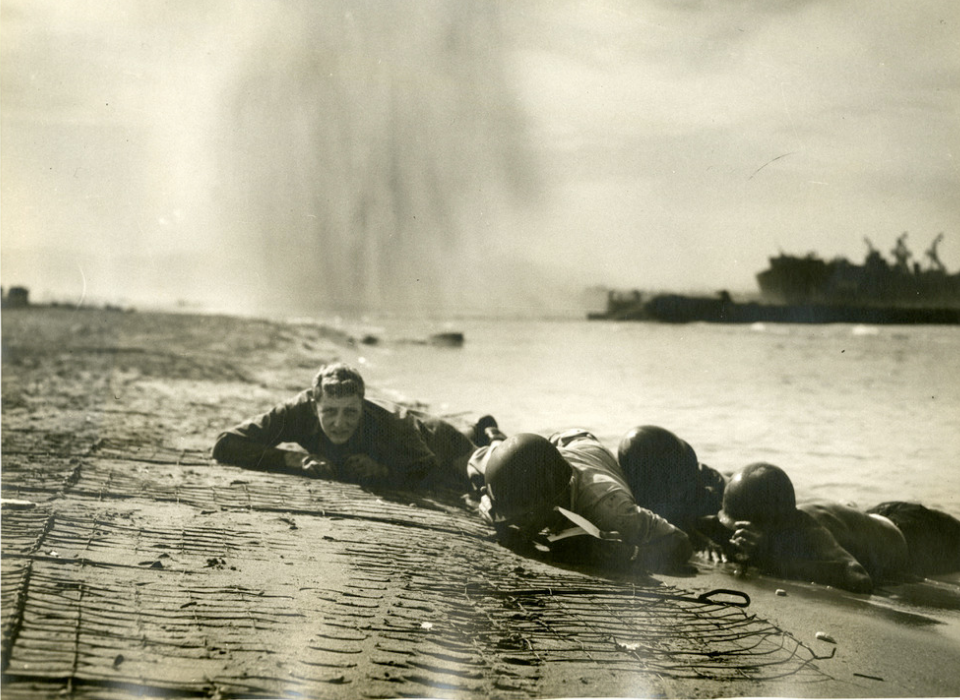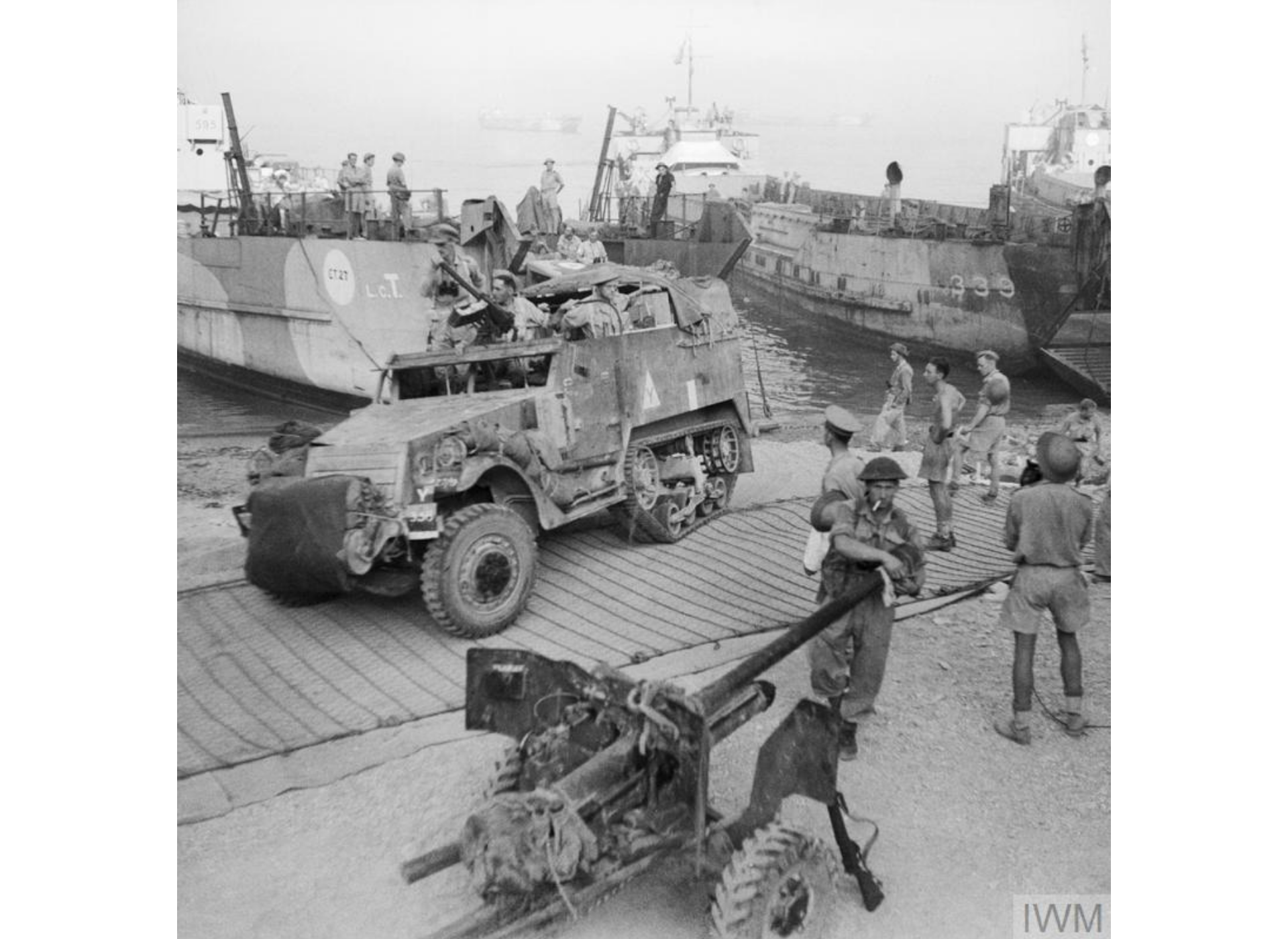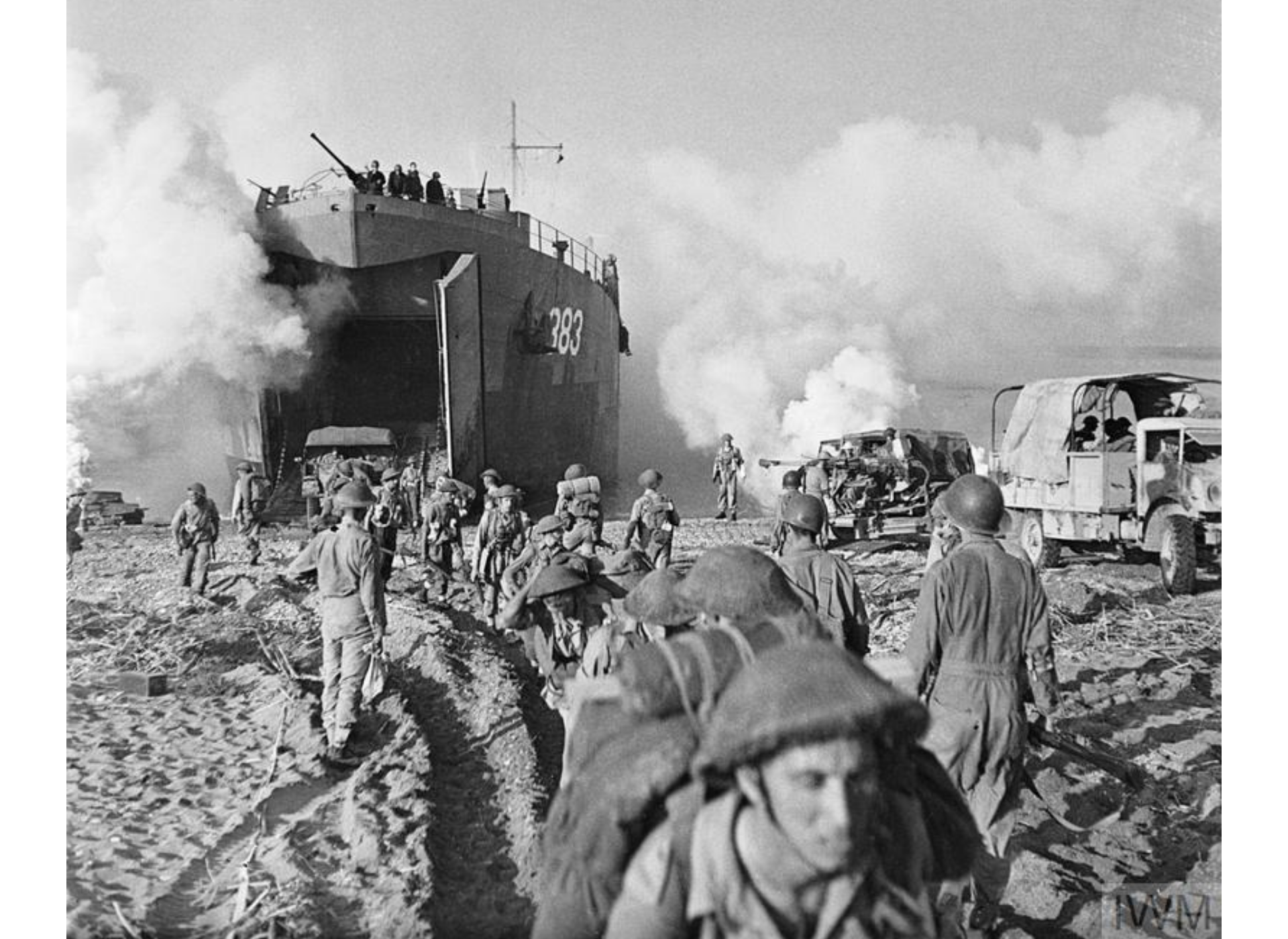Top Image: American soldiers pinned down on the beach at Salerno, Italy, 1943. Official US Coast Guard photograph, Gift of Stacy Hutchinson, from the Collections of the National WWII Museum.
In the words of the great Irish poet William Butler Yeats, there will always be times when “things fall apart.” Unfortunately, he never discussed the follow-up question, “What then?” Do you fall apart with them? Or do you dust yourself off, keep on going, and find a way to put things back together again?
World War II was full of tough moments like that. Take the Allied invasion of Italy in September 1943. About everything that could go wrong, did. A military operation that aimed high suddenly collapsed, and optimistic prospects for success gave way to desperate attempts to stave off catastrophe. The code-name of the Allied operation was “Avalanche,” and for a time, it seemed all too accurate—only the rocks were hurtling down in the wrong direction.
All the omens seemed favorable. The Allies had just successfully overrun Sicily and were dominant on land, sea, and in the air. German armies were bleeding to death in the Soviet Union. An internal revolt in Italy had overthrown Mussolini, and the new Italian government of Marshal Pietro Badoglio was putting out peace feelers. The Allies wanted to take advantage. If they could coordinate their invasion with Italy’s surrender, they might be able to waltz up the peninsula and take Rome, maybe even reach the Po River valley or the Alps.
Sadly, not one of these rosy assumptions was true. While the Italians tried to time their surrender to the moment of the Allied landing, it was easier said than done. Badoglio and the King of Italy, Victor Emmanuel III, kept the surrender a carefully guarded secret, broadcast a sudden announcement on September 8th, then fled Rome. The news came as a bolt out of the blue to the Italian army, with commanders and men alike completely in the dark and without clear orders. One party did have clear orders, however: the Germans. Their reaction to news of the Italian surrender (they saw it as a betrayal) was to launch Operation “Axis,” rapidly occupying the entire peninsula, disarming most of the leaderless Italian army, and smashing the few Italian units who resisted.

For this very reason, “Avalanche” stumbled early. On September 9th, US 5th Army under General Mark W. Clark landed near Salerno, 150 miles up the western coast of the Italian boot. Since Italy had surrendered, Clark expected only light opposition, perhaps a few coastal defense units who hadn’t gotten the memo, but nothing serious.
He was as confused as anyone, therefore, when his troops ran into searing fire from the moment they hit the beach. Expecting Italians, Clark had met the Germans. The adversary was a veteran, battle-tested unit, the 16th Panzer Division, dug into strongpoints along the beach at Salerno, with artillery emplaced on the high ground. Clark’s shaken army managed to land, but the unexpected resistance penned it into a shallow, vulnerable semicircle along the coast.
Clark’s force was soon in big trouble. He had only three divisions on land (the 46th and 56th British on his left, U.S. 36th), with another U.S. division—the 45th--on the way, but the Germans moved quickly, rushing no fewer than six divisions to the sector in the first two days. As their iron ring tightened around Clark’s beachhead, it was just a matter of time before they launched a great counterstroke of their own.
That’s just what happened on day three: a powerful strike against the center of Clark’s line, concentrating on the valley of the small Sele River. As the Germans lunged forward, American resistance seemed to melt away. Assault columns of the 16th Panzer Division smashed one U.S. battalion, inflicting 500 casualties and taking hundreds of prisoners. Some American units tried to rally, and a brutal fight raged around a group of stone warehouses known as the Tobacco Factory. But the Germans had the momentum, and by evening their tanks were less than a mile from the sea. All that stood in their way was a motley U.S. force: a pair of artillery battalions, a few tank destroyers, a gaggle of rear echelon cooks and truck drivers, all standing, we might say, in the last ditch.
That night, the German commander wrote in his diary that “the battle of Salerno appears to be over.” His attacks had apparently crumpled the American beachhead. On the other side of the lines, General Clark was a worried man. He knew he’d “barely escaped disaster," and was thinking of evacuating the beachhead. Critics have accused him of having a case of the jitters.
Clark didn’t evacuate, however, and in the end, he didn’t have to. U.S. forces might still be unsteady in the field, but they had one advantage they were only starting to exploit: the industrial might of their homeland. The workshops and factories of the “arsenal of democracy” were already in high gear by 1943, churning out guns and tanks and aircraft in vast abundance, and providing the U.S. military with a level of firepower that no other contemporary force could match.
So it was at Salerno. Starting on the fourth day, the Americans (with steady assistance from their British allies) began to lay on the heavy metal. Army artillery on land, naval bombardment from the USS Philadelphia and USS Boise at sea, aerial bombing from heavy B-17 Flying Fortress bombers of the U.S. Army Air Forces: all poured a rain of death down on the Germans, preventing them from regaining their momentum and crushing Clark’s beachhead. One German commander at Salerno actually complained of the “unequal fight” his man had endured, and the phrase seems apt.
The Americans had gone through teething problems in North Africa and Sicily, but Salerno showed the force coming of age. Consider: every single assumption underlying “Avalanche” had been wrong. U.S. planners overrated their own strength, underestimated the enemy, and were naïve in thinking that Italy could exit the war without enraging the Germans.
The result was a mess. By the third day at Salerno, things had clearly fallen apart. With their backs to the sea and retreat not an option, U.S. forces still had enough presence of mind to face the question, “What now?” In the course of this difficult fight, they learned to stay steady, breathe deeply, and lay on the firepower until the enemy wilted. They learned to reach for the hammer.
------------
A version of this piece appeared in the series WWII: 75th (GateHouse Media, 2018).
-

A half-track and 6-pdr anti-tank gun coming ashore from landing craft at Reggio, 3 September 1943 © IWM (NA 6204).
-

British troops and vehicles from 128 Brigade, 46th Division are unloaded from LST 383 onto the beaches, Salerno, 9 September 1943 © IWM (NA 6630).
Robert Citino, PhD
Robert Citino, PhD, is the former Samuel Zemurray Stone Senior Historian in the Jenny Craig Institute for the Study of War and Democracy.
Cite this article:
MLA Citation:
APA Citation:
Chicago Style Citation:







![Max Fuchs, New York City cantor, sings as Rabbi Sydney [sic] Lefkowitz, Richmond, VA, conducts the first Jewish services from Germany.](/sites/default/files/styles/max_650x650/public/2025-10/image1.jpg)



